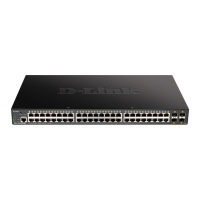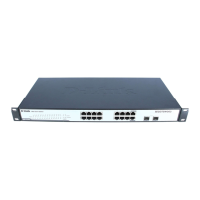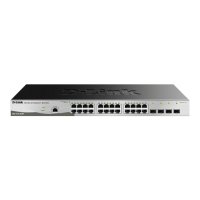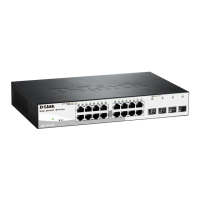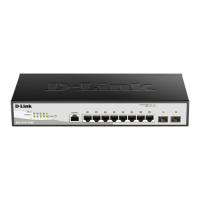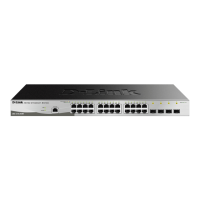DGS-1250 Series Gigabit Ethernet Smart Managed Switch Web UI Reference Guide
211
Network Access Authentication Sessions Information
This window is used to view and clear the network access authentication session information.
To view the following window, click Security > Network Access Authentication > Network Access Authentication
Sessions Information, as shown below:
Figure 9-56 Network Access Authentication Sessions Information Window
The fields that can be configured are described below:
Parameter Description
Port
Select the port for the query here.
Protocol Specifies that the protocol is DOT1X (IEEE 802.1X).
Click the Clear by Port button to the clear the information based on the port selected.
Click the Clear by Protocol button to the clear the information based on the protocol selected.
Click the Clear All button to clear all the information in this table.
Click the Find button to locate a specific entry based on the information entered.
Click the Show All button to locate and display all the entries.
Safeguard Engine
Periodically, malicious hosts on the network will attack the Switch by utilizing packet flooding (ARP Storm) or other
methods. These attacks may increase the Switch’s CPU load beyond its capability. To alleviate this problem, the
Safeguard Engine function was added to the Switch’s software.
The Safeguard Engine can help the overall operability of the Switch by minimizing the workload of the Switch while the
attack is ongoing, thus making it capable to forward essential packets over its network in a limited bandwidth.
If the CPU load rises above the rising threshold value, the Safeguard Engine function will be activated and the Switch
will enter the exhausted mode. In the exhausted mode, the Switch will limit the bandwidth available for ARP and
broadcast IP packets. If the CPU load falls below the falling threshold value, the Safeguard Engine will be deactivated
and the Switch will exit the exhausted mode and enter the normal mode.
Packets that are destined to the CPU can be classified into three groups. These groups, otherwise known as sub-
interfaces, are logical interfaces that the CPU will use to identify certain types of traffic. The three groups are
Protocol, Manage, and Route.
Generally, the Protocol group should receive the highest priority when the Switch’s CPU processes received packets
and the Route group should receive the lowest priority as the Switch’s CPU usually does get involved in the
processing of routing packets. In the Protocol group, packets are protocol control packets identified by the router. In
the Manage group, packets are destined to any router or system network management interface by means of
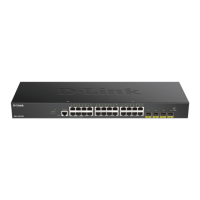
